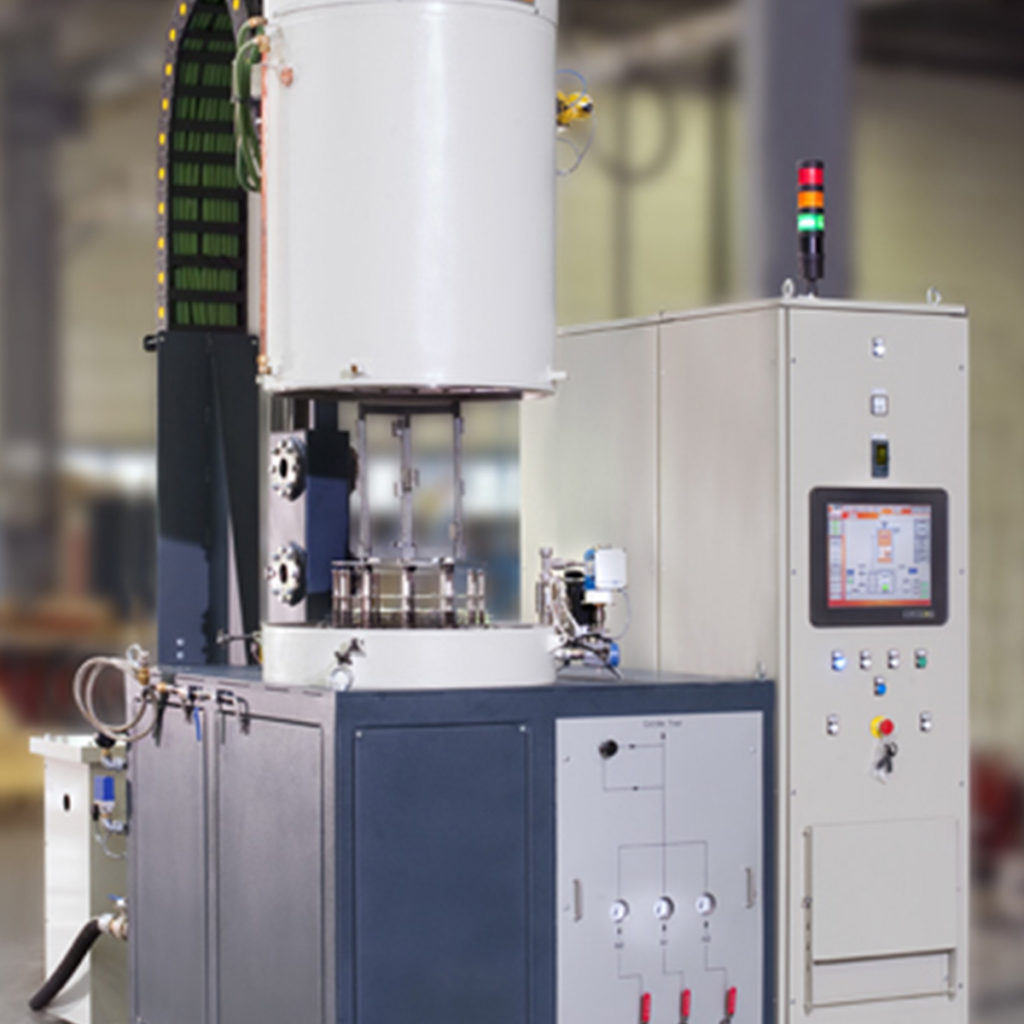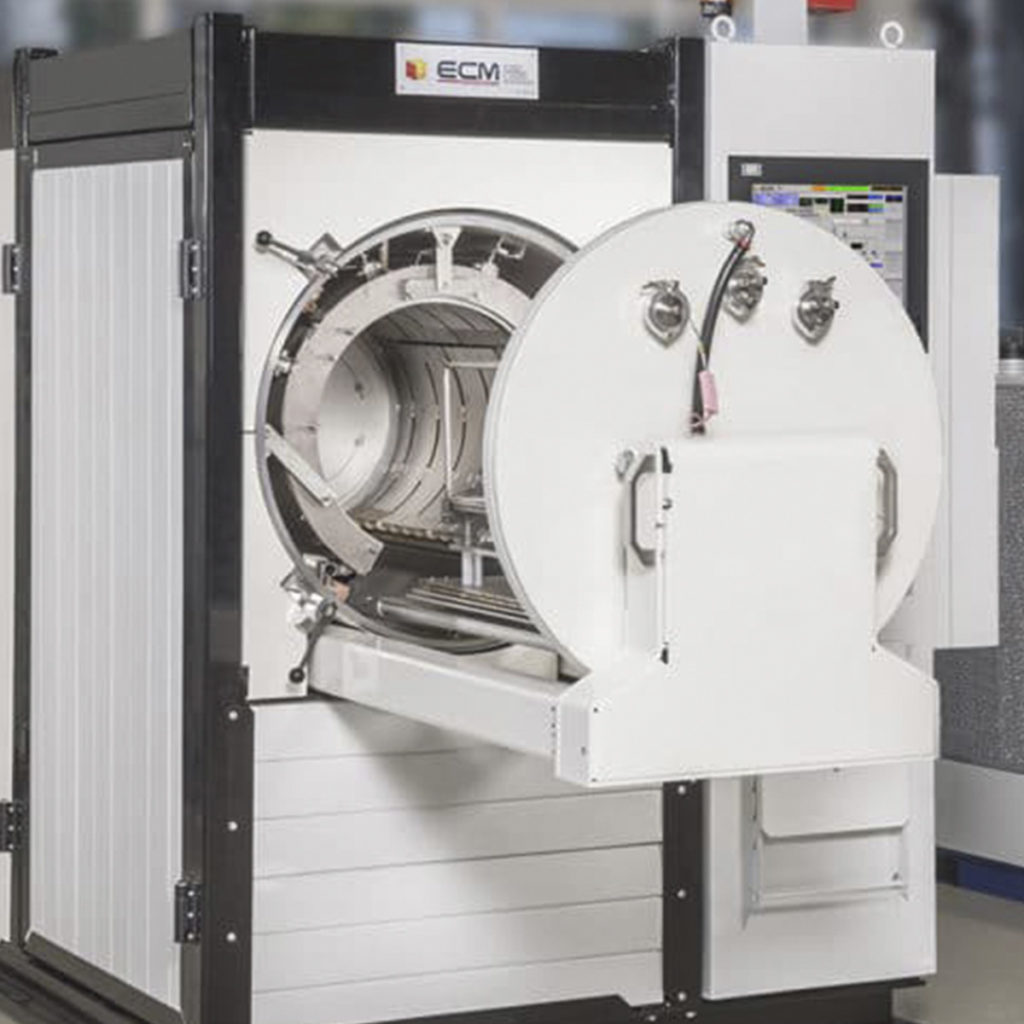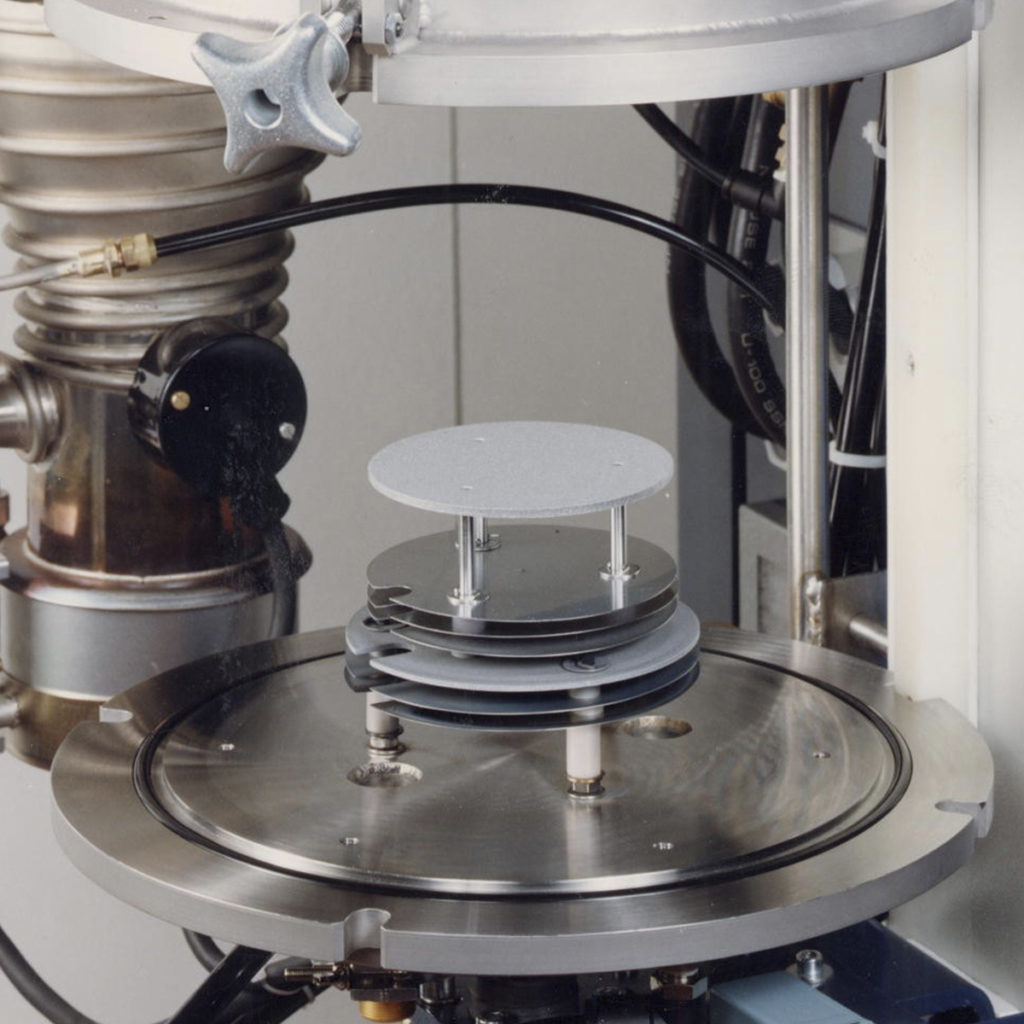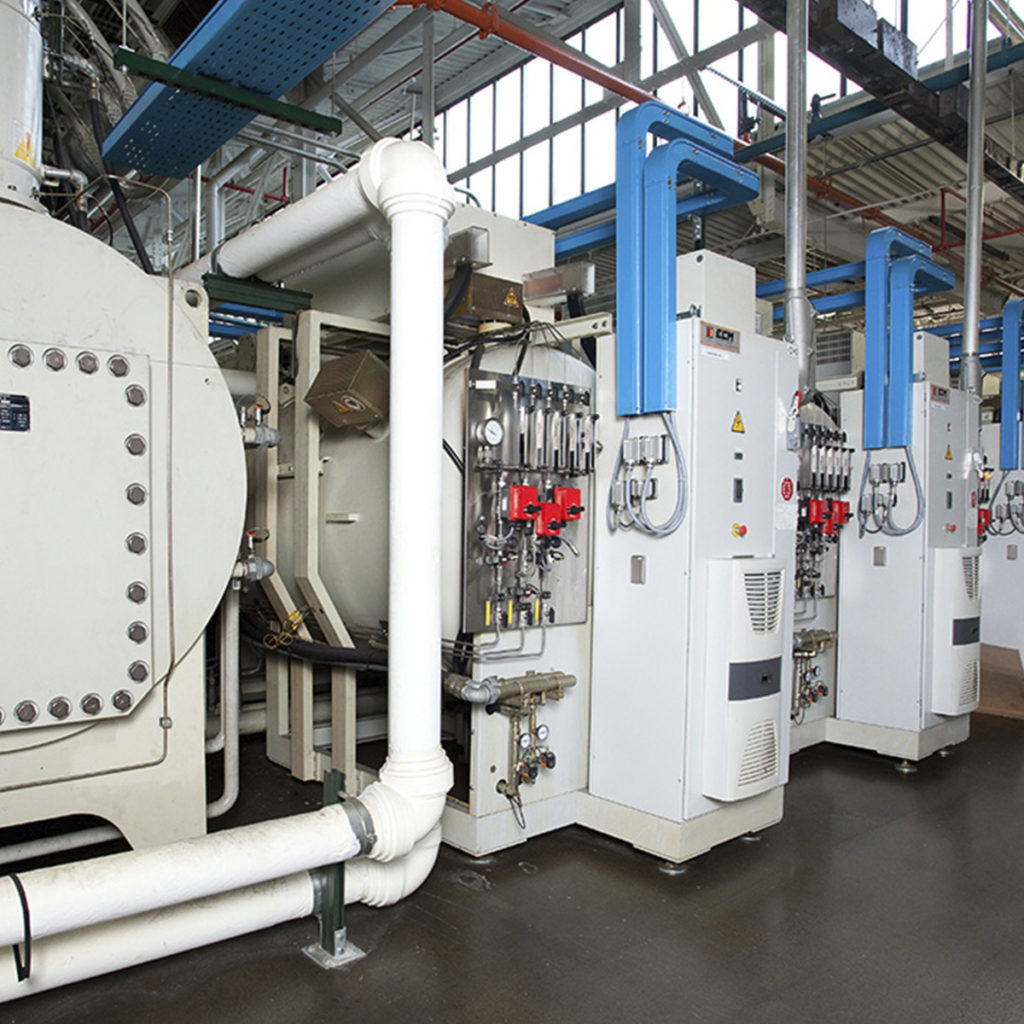Vacuum Induction Melting (VIM/VAR)
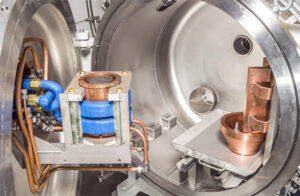 Our vacuum induction melting (VIM) or vacuum arc remelting (VAR) furnaces are designed to develop new materials for melting metal alloys, glasses, silica, refractory materials, and oxidizing materials requiring high temperature ranges. Our melting applications cover the needs of laboratories and R&D centers to industries and small foundries with scale-able and modular solutions, and are also adaptable to investment programs.
Our vacuum induction melting (VIM) or vacuum arc remelting (VAR) furnaces are designed to develop new materials for melting metal alloys, glasses, silica, refractory materials, and oxidizing materials requiring high temperature ranges. Our melting applications cover the needs of laboratories and R&D centers to industries and small foundries with scale-able and modular solutions, and are also adaptable to investment programs.
Elaboration of Materials
The melting and elaboration of materials with high added value, as well as the improvement of their physical properties, takes place in vacuum furnaces or under controlled atmosphere. Required technologies could be cold crucible (made of cooled copper or cooled stainless steel), hot crucible (graphite or other) or the use of susceptor or radiating muffle to heat materials. Consequently, cold electric insulating materials (ceramic, glass, enamel, silicon) can be treated within our induction furnaces. Solutions using plasma technologies can also be used to purify materials.
The ECM furnace range dedicated to the elaboration of materials covers a wide range of industries: metallurgy, refractory materials, aeronautics, nuclear and additive manufacturing.

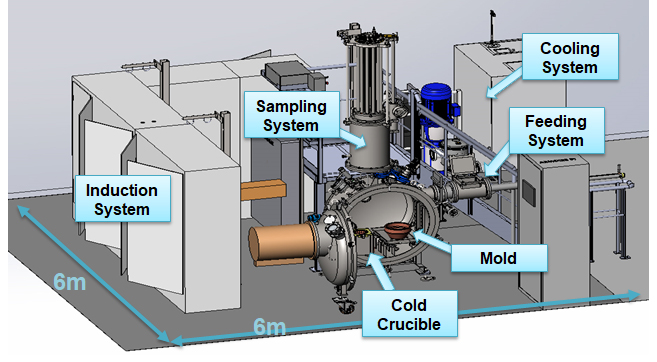 ECM has developed different technologies from numerous R&D studies and discussions with industry partners. Resulting technological innovations are integrated in all our products using inductive technologies such as laboratory furnaces, VIM/VAR and CCIM furnaces, as well as foundry workshops. ECM masters the following technologies:
ECM has developed different technologies from numerous R&D studies and discussions with industry partners. Resulting technological innovations are integrated in all our products using inductive technologies such as laboratory furnaces, VIM/VAR and CCIM furnaces, as well as foundry workshops. ECM masters the following technologies:
• Cold crucible
• Hot crucible
• Conductive crucible
• Atomizing tower
• Under vacuum
• Resistive technologies
Focus on Cold Crucibles
ECM can integrate cold crucibles within its induction furnaces to elaborate reactive materials. Cold crucibles are made of copper parts that are water cooled. A layer called auto crucible is a solid material resulting from the interaction on the crucible walls, prevents from the contamination of the melt and limits the crucible’s wear.
Cold Crucible Advantages
• Elaboration of reactive materials at high temperature (up tp 3000°C)
• Elaboration of high purity materials (no bath pollution by the crucible)
• Excellent thermal and chemical homogeneity (thanks to electromagnetic brazing)
• Long life expectancy (compared to ceramic crucibles)
When elaborating new materials or modifying their physical properties, ECM brings its expertise in the engineering and studies of interactions between materials, and in the extraction of samples. This process expertise results from high temperature and vacuum expertise. Also, high added value engineering projects are supported by numerical simulation or piloting process expertise. In turn, ECM Technologies has strong intervention and R&D capabilities within this industry.
R&D PLATFORM
ECM has engineers and scientists focused on melting and remelting applications, and on the elaboration of materials and premium technological partners with leading know-how. Indeed, ECM has collaborated with the French CEA on cold crucible and conductive crucible topics, as well as, with the UTBM for atomizing towers and crucible technologies. Metafensch is also a key partner for vacuum induction melting applications.
These partnerships allow ECM Technologies to use a high end R&D platform, leader on the elaboration of materials market, to create synergies and share expertise.



